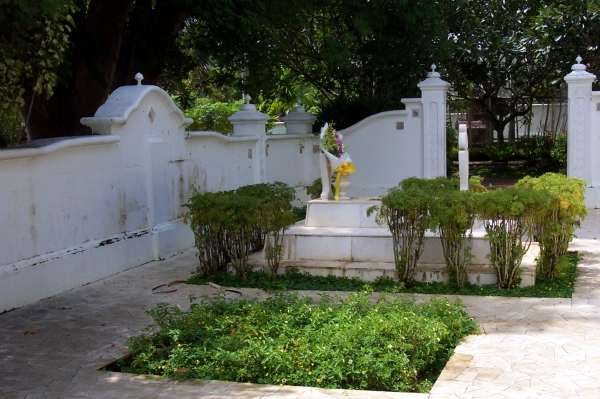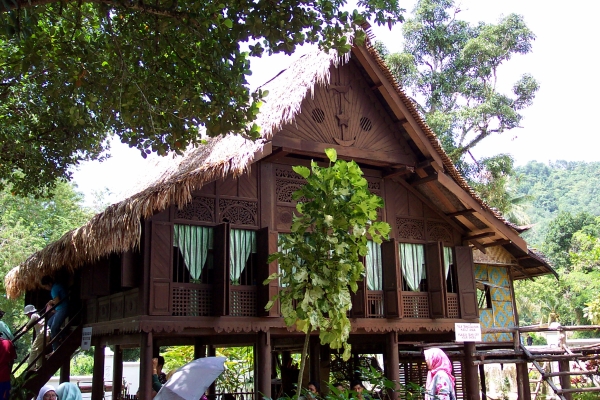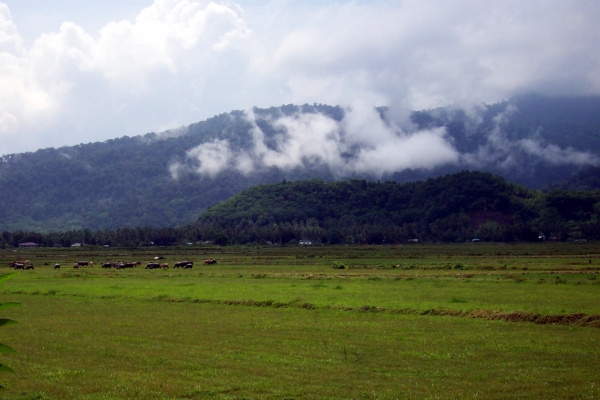The Mahsuri legend has become something of a cultural icon for Malaysians. Even though the events recounted in the legend happened little more than 200 years ago, its amazing how many different versions there are of the story. One anthropologist has determined that there are least seven variations. However, the basic events remain very much the same.

The tomb, built in modern times, of Mahsuri
Mahsuri was a beautiful young woman born in Langkawi of immigrants from Phuket late in the eighteenth century. In some versions of the legend she is a princess, but in most she is born of common farmers. All agree that she was of extraordinary beauty. As such, she was much sought after as a bride by the young men of the village. Even the powerful village headman wanted to make her his second wife, but his first wife objected.

A traditional styled house in the grounds of Mahsuri's memorial
Eventually Mahsuri married a young man from her village, but after some time he went away on business (or to fight in a war) leaving Mahsuri home alone for a long time. At some point, a wandering minstrel (or storyteller) came along who captivated the whole village, including Mahsuri. Having no place to stay, Mahsuri offered to allow the man to stay in her house.
Still jealous of the young beauty, the village headman's wife accused Mahsuri of adultery. Still smarting over her rejection, the headman condemned Mahsuri to death. In most versions of the story, attempts to kill Mahsuri were in vain until she took her own father's kris and stabbed herself. Her veins supposedly spouted white blood - proof of her innocence - and she cursed the island to be barren for seven generations.
As it happened, the Siamese kingdom of Ligor invaded Langkawi not long after Mahsuri's death and laid waste to the island with a scorched earth policy. The seven generations were completed a few years ago, just coincidentally as Langkawi was set to become a major tourist destination.

The fields and mountains next to the memorial
Originally, there was no gravestone or other marker of Mahsuri's death and burial. The reason why this story is such an important part of today's national Malay culture probably lies with the young district officer who first built the tomb. Abdul Rahman learned of the Mahsuri legend while a district officer and had the modest cenotaph seen today constructed. Abdul Rahman went on to become Malaysia's first prime minister when it gained independence from England in 1957.
In addition to the tomb, the memorial compound includes a traditional styled house, a well, and the inevitable handicraft shop. The compound borders a picturesque rice field with mountains beyond.
Lonely Planet describes the tomb as a "complete rip-off" but I wouldn't be that tough. It's an interesting enough place, and I can hardly call the admission fee of RM 2 (0.41 USD) a rip-off. It's not a place you would make a special trip to visit, but I didn't consider it a waste of time as part of an afternoon of sightseeing around the island.